Si1145/46/47
PROXIMITY/UV/AMBIENT LIGHT SENSOR IC WITH I2C INTERFACE
Pin Assignments
SDA
SCL
VDD
INT
1
2
3
4
DNC
10
QFN-10
5
DNC
9
8
7
6
LED1
GND
LED3/CVDD
LED2/CVDD
Features
Integrated infrared proximity detector
Proximity detection adjustable from
Integrated UV index sensor
Industry's lowest power consumption
under 1 cm to over 50 cm
Three independent LED drivers
15 current settings from 5.6 mA to
360 mA for each LED driver
25.6 µs LED driver pulse width
50 cm proximity range with single
15 cm proximity range with single
power-on reset controller
1.71 to 3.6 V supply voltage
9 µA average current (LED pulsed
25.6 µs every 800 ms at 180 mA
plus 3 µA Si114x supply)
< 500 nA standby current
Internal and external wake support
Built-in voltage supply monitor and
25.6 µs LED “on” time keeps total
power consumption duty cycle low
without compromising performance
or noise immunity
I2C Serial communications
Up to 3.4 Mbps data rate
Slave mode hardware address
decoding
Small-outline 10-lead 2x2 mm QFN
Temperature Range
–40 to +85 °C
pulse (<3 klx)
pulse (>3 klx)
sunlight)
< 1 µW/cm2
packaging
Operates at up to 128 klx (direct
High reflectance sensitivity
High EMI immunity without shielded
Integrated ambient light sensor
100 mlx resolution possible,
allowing operation under dark glass
1 to 128 klx dynamic range possible
across two ADC range settings
Accurate lux measurements with IR
correction algorithm
Applications
Handsets
E-book readers
Notebooks/Netbooks
Portable consumer electronics
Audio products
Security panels
Tamper detection circuits
Dispensers
Description
Valve controls
Smoke detectors
Touchless switches
Touchless sliders
Occupancy sensors
Consumer electronics
Industrial automation
Display backlighting control
Photo-interrupters
The Si1145/46/47 is a low-power, reflectance-based, infrared proximity, ultraviolet
(UV) index, and ambient light sensor with I2C digital interface and programmable-
event interrupt output. This touchless sensor IC includes an analog-to-digital
converter, integrated high-sensitivity visible and infrared photodiodes, digital signal
processor, and one, two, or three integrated infrared LED drivers with fifteen
selectable drive levels. The Si1145/46/47 offers excellent performance under a wide
dynamic range and a variety of light sources including direct sunlight. The Si1145/46/
47 can also work under dark glass covers. The photodiode response and associated
digital conversion circuitry provide excellent immunity to artificial light flicker noise
and natural light flutter noise. With two or more LEDs, the Si1146/47 is capable of
supporting multiple-axis proximity motion detection. The Si1145/46/47 devices are
provided in a 10-lead 2x2 mm QFN package and are capable of operation from 1.71
to 3.6 V over the –40 to +85 °C temperature range.
Rev. 1.3 12/14
Copyright © 2014 by Silicon Laboratories
Si1145/46/47
�
Si1145/46/47
Functional Block Diagram
VDD
INT
SCL
SDA
A
M
U
X
Regulator
Temp
Visible
Infrared
I2C
ADC
Filter
LED
Drivers
LED1
LED21
LED32
Digital Sequencer & Control Logic
Registers
Oscillator
GND
1. Si1146 and Si1147 only. Must be tied to VDD with Si1145.
2. Si1147 only. Must be tied to VDD with Si1145 and Si1146.
3.3 V
Host
SDA
SCL
INT
3.3 V
Host
Si1145
SDA
SCL
VDD
INT
LED1
GND
CVDD
CVDD
0.1 uF
30 ohm
5%, 1/16 W
15 µF, 20%, >6 V
Figure 1. Si1145 Basic Application
4.3 V
No
Pop
30 ohm
5%, 1/16 W
22 uF, 20%, >6V
Si1147
SDA
SCL
VDD
INT
LED1
GND
LED3
LED2
0.1 uF
Figure 2. Si1147 Application with Three LEDs and Separate LED Power Supply
Note: For more application examples, refer to “AN498: irLED Selection Guide for Si114x Proximity Applications”.
2
Rev. 1.3
�
TABLE OF CONTENTS
Si1145/46/47
1. Electrical Specifications . . . . . . . . . . . . . . . . . . . . . . . . . . . . . . . . . . . . . . . . . . . . . . . . . . .4
1.1. Performance Tables . . . . . . . . . . . . . . . . . . . . . . . . . . . . . . . . . . . . . . . . . . . . . . . . . .4
1.2. Typical Performance Graphs . . . . . . . . . . . . . . . . . . . . . . . . . . . . . . . . . . . . . . . . . .10
2. Functional Description . . . . . . . . . . . . . . . . . . . . . . . . . . . . . . . . . . . . . . . . . . . . . . . . . . .12
2.1. Introduction . . . . . . . . . . . . . . . . . . . . . . . . . . . . . . . . . . . . . . . . . . . . . . . . . . . . . . . .12
2.2. Proximity Sensing (PS) . . . . . . . . . . . . . . . . . . . . . . . . . . . . . . . . . . . . . . . . . . . . . . .12
2.3. Ambient Light . . . . . . . . . . . . . . . . . . . . . . . . . . . . . . . . . . . . . . . . . . . . . . . . . . . . . .13
2.4. Ultraviolet (UV) Index . . . . . . . . . . . . . . . . . . . . . . . . . . . . . . . . . . . . . . . . . . . . . . . .15
2.5. Host Interface . . . . . . . . . . . . . . . . . . . . . . . . . . . . . . . . . . . . . . . . . . . . . . . . . . . . . .17
3. Operational Modes . . . . . . . . . . . . . . . . . . . . . . . . . . . . . . . . . . . . . . . . . . . . . . . . . . . . . . .19
3.1. Off Mode . . . . . . . . . . . . . . . . . . . . . . . . . . . . . . . . . . . . . . . . . . . . . . . . . . . . . . . . . .19
3.2. Initialization Mode . . . . . . . . . . . . . . . . . . . . . . . . . . . . . . . . . . . . . . . . . . . . . . . . . . .19
3.3. Standby Mode . . . . . . . . . . . . . . . . . . . . . . . . . . . . . . . . . . . . . . . . . . . . . . . . . . . . . .19
3.4. Forced Conversion Mode . . . . . . . . . . . . . . . . . . . . . . . . . . . . . . . . . . . . . . . . . . . . .19
3.5. Autonomous Operation Mode . . . . . . . . . . . . . . . . . . . . . . . . . . . . . . . . . . . . . . . . . .20
4. Programming Guide . . . . . . . . . . . . . . . . . . . . . . . . . . . . . . . . . . . . . . . . . . . . . . . . . . . . . .21
4.1. Command and Response Structure . . . . . . . . . . . . . . . . . . . . . . . . . . . . . . . . . . . . .21
4.2. Command Protocol . . . . . . . . . . . . . . . . . . . . . . . . . . . . . . . . . . . . . . . . . . . . . . . . . .22
4.3. Resource Summary . . . . . . . . . . . . . . . . . . . . . . . . . . . . . . . . . . . . . . . . . . . . . . . . .24
4.4. Signal Path Software Model . . . . . . . . . . . . . . . . . . . . . . . . . . . . . . . . . . . . . . . . . . .28
4.5. I2C Registers . . . . . . . . . . . . . . . . . . . . . . . . . . . . . . . . . . . . . . . . . . . . . . . . . . . . . . .29
4.6. Parameter RAM . . . . . . . . . . . . . . . . . . . . . . . . . . . . . . . . . . . . . . . . . . . . . . . . . . . .45
5. Pin Descriptions . . . . . . . . . . . . . . . . . . . . . . . . . . . . . . . . . . . . . . . . . . . . . . . . . . . . . . . . .60
6. Ordering Guide . . . . . . . . . . . . . . . . . . . . . . . . . . . . . . . . . . . . . . . . . . . . . . . . . . . . . . . . . .61
7. Package Outline: 10-Pin QFN . . . . . . . . . . . . . . . . . . . . . . . . . . . . . . . . . . . . . . . . . . . . . .62
8. Suggested PCB Land Pattern . . . . . . . . . . . . . . . . . . . . . . . . . . . . . . . . . . . . . . . . . . . . . .64
Document Change List . . . . . . . . . . . . . . . . . . . . . . . . . . . . . . . . . . . . . . . . . . . . . . . . . . . . .66
Contact Information . . . . . . . . . . . . . . . . . . . . . . . . . . . . . . . . . . . . . . . . . . . . . . . . . . . . . . . .67
Rev. 1.3
3
�
Si1145/46/47
1. Electrical Specifications
1.1. Performance Tables
Table 1. Recommended Operating Conditions
Parameter
Symbol
Test Condition
VDD Supply Voltage
VDD OFF Supply Voltage
VDD Supply Ripple Voltage
VDD
VDD_OFF
Operating Temperature
SCL, SDA, Input High Logic
Voltage
SCL, SDA Input Low Logic
Voltage
PS Operation under
Direct Sunlight
IrLED Emission Wavelength
IrLED Supply Voltage
IrLED Supply Ripple Voltage
T
I2CVIH
I2CVIL
Edc
l
VLED
Start-Up Time
LED3 Voltage
OFF mode
VDD = 3.3 V
1 kHz–10 MHz
Min
1.71
–0.3
—
–40
VDDx0.7
Typ
—
—
25
—
Max
Unit
3.6
1.0
50
85
VDD
128
950
4.3
250
100
—
—
V
V
mVpp
°C
V
V
klx
nm
V
mVpp
mVpp
ms
V
— VDDx0.3
0
—
750
VDD
—
—
25
IrLED VF = 1.0 V nominal
Applies if IrLEDs use
separate supply rail
0–30 kHz
30 kHz–100 MHz
VDD above 1.71 V
—
850
—
—
—
—
Start-up
VDDx0.77 —
4
Rev. 1.3
�
—
—
—
—
—
—
—
—
—
—
—
—
—
—
—
—
—
—
—
—
—
4.3
8
50
60
70
80
115
150
185
220
255
290
315
340
360
385
410
25.6
5.5
—
70
105
105
105
450
450
450
450
450
450
600
600
600
600
600
30
mA
mA
mV
µs
µA
Iactive
Without LED influence, VDD = 3.3 V
VDD = 3.3 V
Vdd=1.71 to 3.6 V
PS_LEDn=0001
PS_LEDn=0010
PS_LEDn=0011
PS_LEDn=0100
PS_LEDn=0101
PS_LEDn=0110
PS_LEDn=0111
PS_LEDn=1000
PS_LEDn=1010
PS_LEDn=1010
PS_LEDn=1011
PS_LEDn=1100
PS_LEDn=1101
PS_LEDn=1110
PS_LEDn=1111
tPS
IDD Actively Measuring
Peak IDD while LED1,
LED2, or LED3 is Actively
Driven
LED Driver Saturation
Voltage2,3
LED1, LED2, LED3
Pulse Width
LED1, LED2, LED3, INT,
SCL, SDA
Leakage Current
Notes:
Si1145/46/47
Table 2. Performance Characteristics1
Parameter
Symbol
Test Condition
Min
IDD OFF Mode
IDD Standby Mode
IDD Standby Mode
Ioff
Isb
Isb
VDD < VDD_OFF (leakage from SCL,
SDA, and INT not included)
No ALS / PS Conversions
No I2C Activity
VDD = 1.8 V
No ALS / PS Conversions
No I2C Activity
VDD =3.3 V
Typ
240
Max
1000
150
500
Unit
nA
nA
1.4
—
µA
VDD = 3.3 V
–1
—
1
1. Unless specifically stated in "Conditions", electrical data assumes ambient light levels < 1 klx.
2. Proximity-detection performance may be degraded, especially when there is high optical crosstalk, if the LED supply
and voltage drop allow the driver to saturate and current regulation is lost.
3. Guaranteed by design and characterization.
4. Represents the time during which the device is drawing a current equal to Iactive for power estimation purposes.
Assumes default settings.
Rev. 1.3
5
�
Si1145/46/47
Table 2. Performance Characteristics1 (Continued)
Parameter
LED1, LED2, LED3
Active Current
Symbol
ILEDx
Actively Measuring Time4
Visible Photodiode
Response
Test Condition
Min
Typ
Max
VDD = 3.3 V, single drive
VLEDn = 1 V, PS_LEDn = 0001
VLEDn = 1 V, PS_LEDn = 0010
VLEDn = 1 V, PS_LEDn = 0011
VLEDn = 1 V, PS_LEDn = 0100
VLEDn = 1 V, PS_LEDn = 0101
VLEDn = 1 V, PS_LEDn = 0110
VLEDn = 1 V, PS_LEDn = 0111
VLEDn = 1 V, PS_LEDn = 1000
VLEDn = 1 V, PS_LEDn = 1001
VLEDn = 1 V, PS_LEDn = 1010
VLEDn = 1 V, PS_LEDn = 1011
VLEDn = 1 V, PS_LEDn = 1100
VLEDn = 1 V, PS_LEDn = 1101
VLEDn = 1 V, PS_LEDn = 1110
VLEDn = 1 V, PS_LEDn = 1111
Single PS
UV or ALS VIS + ALS IR
Two ALS plus three PS
Sunlight
ALS_VIS_ADC_GAIN=0
VIS_RANGE=0
2500K incandescent bulb
ALS_VIS_ADC_GAIN=0
VIS_RANGE=0
“Cool white” fluorescent
ALS_VIS_ADC_GAIN=0
VIS_RANGE=0
Infrared LED (875 nm)
ALS_VIS_ADC_GAIN=0
VIS_RANGE=0
3.5
—
13
—
—
—
—
—
—
—
—
—
—
—
—
—
—
—
—
5.6
11.2
22.4
45
67
90
112
135
157
180
202
224
269
314
359
155
285
660
0.282
7
—
29
—
—
—
—
—
—
—
—
—
—
—
—
—
—
—
—
—
0.319
—
—
0.146
—
—
8.277
—
Unit
mA
µs
µs
µs
ADC
counts/
lux
ADC
counts/
lux
ADC
counts/
lux
ADC
counts.
m2/W
Notes:
1. Unless specifically stated in "Conditions", electrical data assumes ambient light levels < 1 klx.
2. Proximity-detection performance may be degraded, especially when there is high optical crosstalk, if the LED supply
and voltage drop allow the driver to saturate and current regulation is lost.
3. Guaranteed by design and characterization.
4. Represents the time during which the device is drawing a current equal to Iactive for power estimation purposes.
Assumes default settings.
6
Rev. 1.3
�
Table 2. Performance Characteristics1 (Continued)
Parameter
Symbol
Test Condition
Small Infrared Photodiode
Response
Large Infrared Photodi-
ode Response
Sunlight
ALS_IR_ADC_GAIN=0
IR_RANGE=0
2500K incandescent bulb
ALS_IR_ADC_GAIN=0
IR_RANGE=0
“Cool white” fluorescent
ALS_IR_ADC_GAIN=0
IR_RANGE=0
Infrared LED (875 nm)
ALS_IR_ADC_GAIN=0
IR_RANGE=0
Sunlight
PS_ADC_GAIN=0
PS_RANGE=0
PS_ADC_MODE=0
2500K incandescent bulb
PS_ADC_GAIN=0
PS_RANGE=0
PS_ADC_MODE=0
“Cool white” fluorescent
PS_ADC_GAIN=0
PS_RANGE=0
PS_ADC_MODE=0
Infrared LED (875 nm)
PS_ADC_GAIN=0
PS_RANGE=0
PS_ADC_MODE=0
Visible Photodiode Noise
All gain settings
Small Infrared Photodiode
Noise
All gain settings
Si1145/46/47
Min
—
Typ
2.44
—
Max
Unit
—
8.46
—
—
0.71
—
— 452.38 —
—
14.07
—
—
50.47
—
—
3.97
—
—
2734
—
—
—
7
1
—
—
ADC
counts/
lux
ADC
counts/
lux
ADC
counts/
lux
ADC
counts.
m2/W
ADC
counts/
lux
ADC
counts/
lux
ADC
counts/
lux
ADC
counts.
m2/W
ADC
counts
RMS
ADC
counts
RMS
Notes:
1. Unless specifically stated in "Conditions", electrical data assumes ambient light levels < 1 klx.
2. Proximity-detection performance may be degraded, especially when there is high optical crosstalk, if the LED supply
and voltage drop allow the driver to saturate and current regulation is lost.
3. Guaranteed by design and characterization.
4. Represents the time during which the device is drawing a current equal to Iactive for power estimation purposes.
Assumes default settings.
Rev. 1.3
7
�
Si1145/46/47
Table 2. Performance Characteristics1 (Continued)
Parameter
Symbol
Large Infrared Photodi-
ode Noise
Visible Photodiode Offset
Drift
Small Infrared Photodiode
Offset Drift
Test Condition
All gain settings
VIS_RANGE=0
ALS_VIS_ADC_GAIN=0
ALS_VIS_ADC_GAIN=1
ALS_VIS_ADC_GAIN=2
ALS_VIS_ADC_GAIN=3
ALS_VIS_ADC_GAIN=4
ALS_VIS_ADC_GAIN=5
ALS_VIS_ADC_GAIN=6
ALS_VIS_ADC_GAIN=7
IR_RANGE=0
IR_GAIN=0
IR_GAIN=1
IR_GAIN=2
IR_GAIN=3
SCL, SDA, INT Output
Low Voltage
VOL
I = 4 mA, VDD > 2.0 V
I = 4 mA, VDD < 2.0 V
Temperature Sensor Off-
set
Temperature Sensor Gain
25 °C
Min
—
—
—
—
—
—
—
Typ
10
–0.3
–0.11
–0.06
–0.03
–0.01
–0.008
–0.007
–0.008
–0.3
–0.06
–0.03
–0.01
—
—
11136
35
Max
Unit
—
—
ADC
counts
RMS
ADC
counts/
°C
—
ADC
counts/
°C
VDDx0.
2
0.4
V
V
—
—
ADC
counts
ADC
counts/
°C
Notes:
1. Unless specifically stated in "Conditions", electrical data assumes ambient light levels < 1 klx.
2. Proximity-detection performance may be degraded, especially when there is high optical crosstalk, if the LED supply
and voltage drop allow the driver to saturate and current regulation is lost.
3. Guaranteed by design and characterization.
4. Represents the time during which the device is drawing a current equal to Iactive for power estimation purposes.
Assumes default settings.
8
Rev. 1.3
�
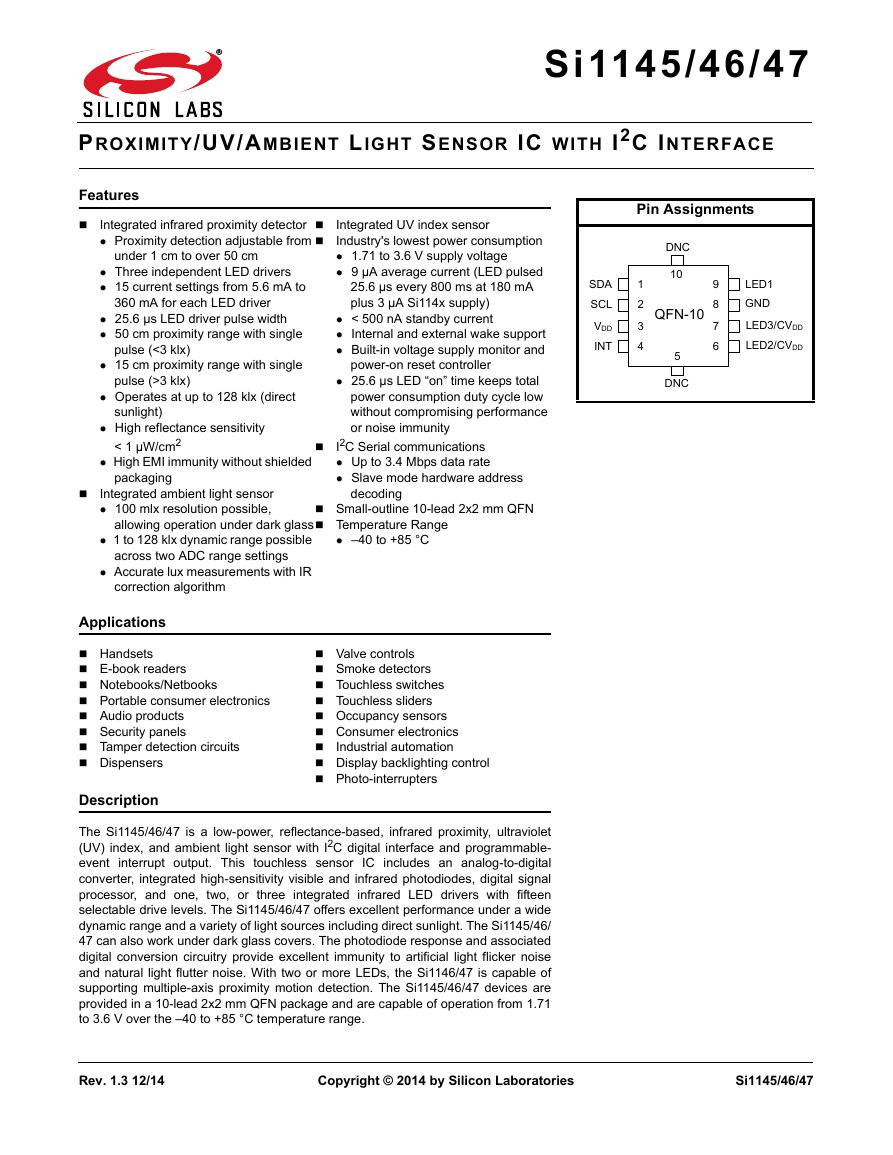
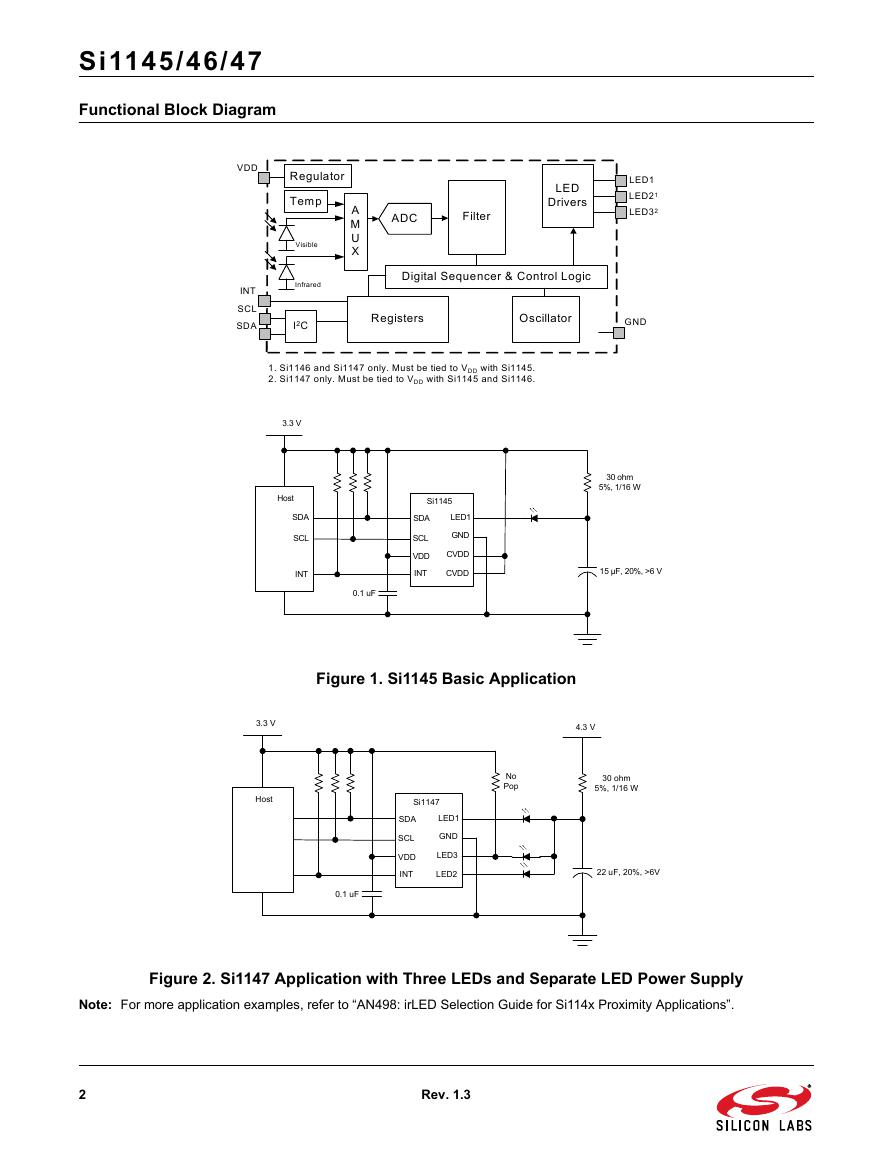

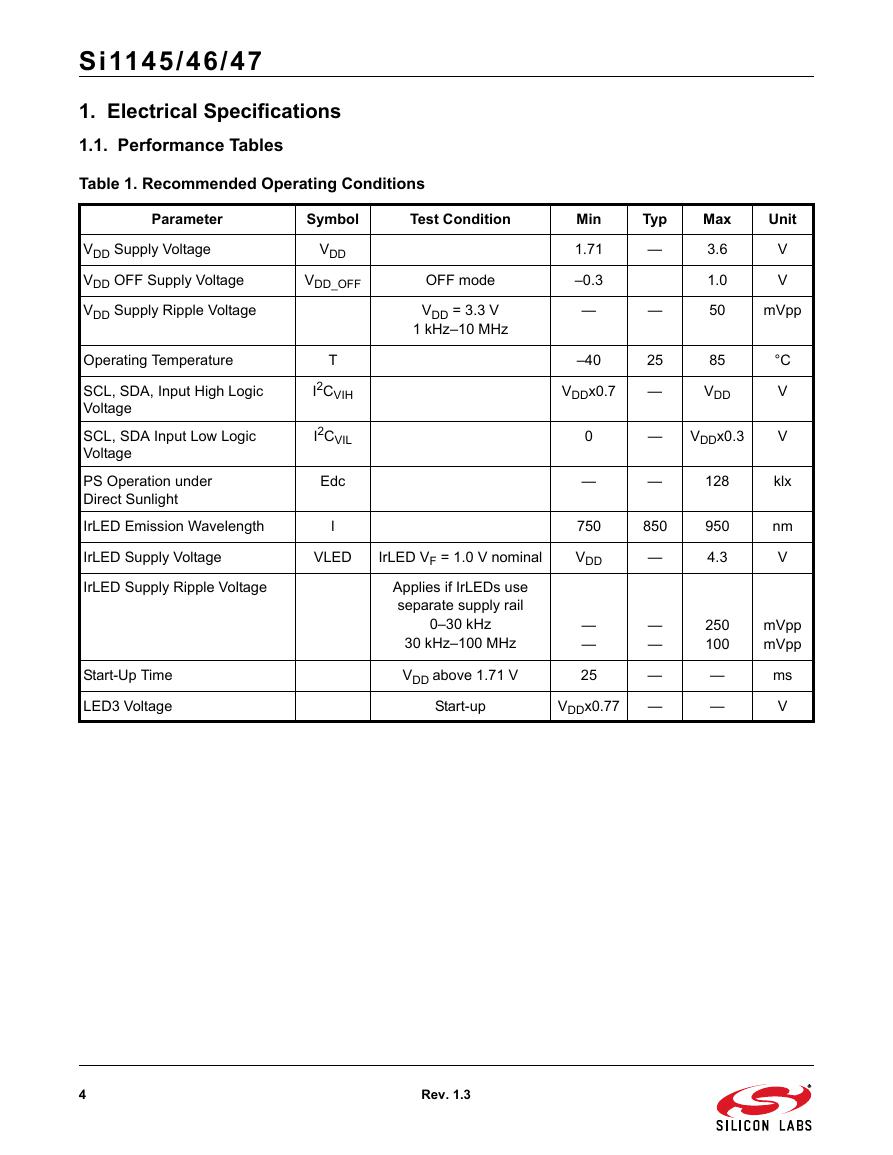
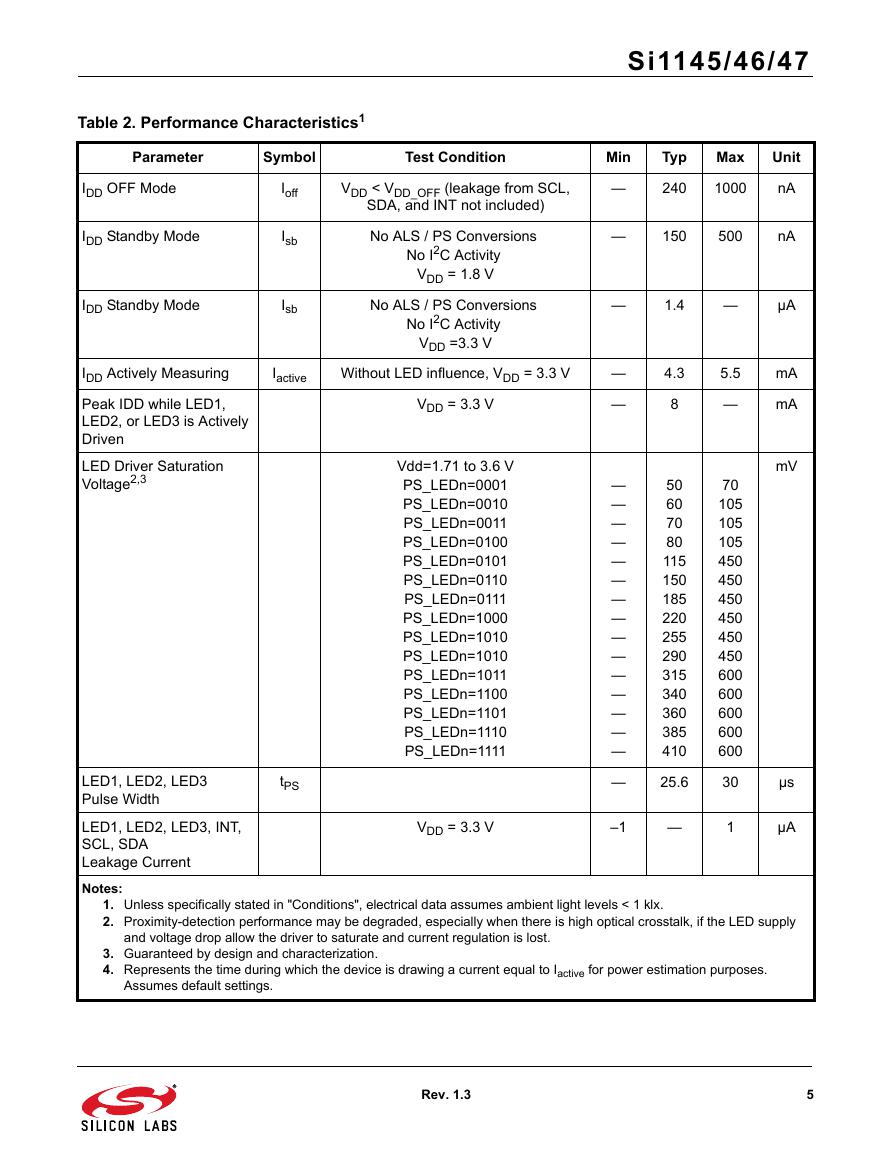
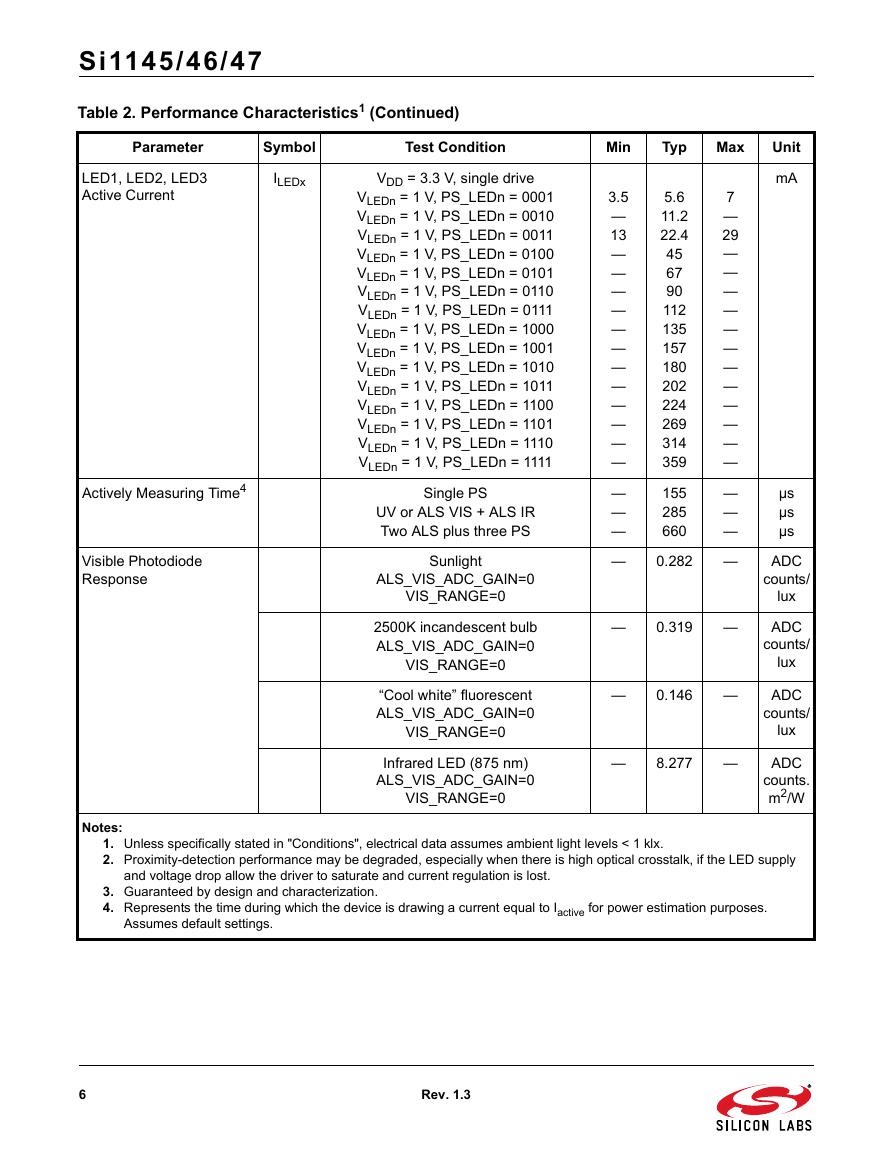
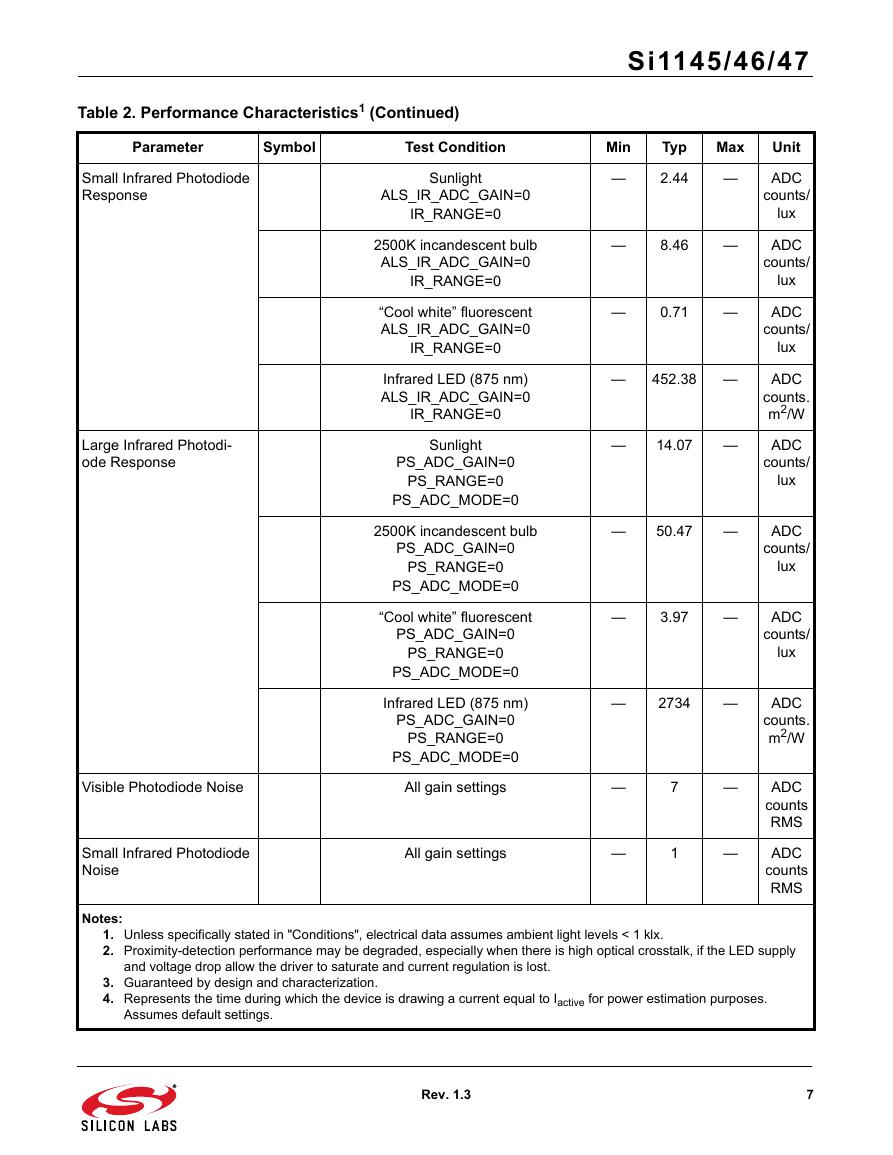









 V2版本原理图(Capacitive-Fingerprint-Reader-Schematic_V2).pdf
V2版本原理图(Capacitive-Fingerprint-Reader-Schematic_V2).pdf 摄像头工作原理.doc
摄像头工作原理.doc VL53L0X简要说明(En.FLVL53L00216).pdf
VL53L0X简要说明(En.FLVL53L00216).pdf 原理图(DVK720-Schematic).pdf
原理图(DVK720-Schematic).pdf 原理图(Pico-Clock-Green-Schdoc).pdf
原理图(Pico-Clock-Green-Schdoc).pdf 原理图(RS485-CAN-HAT-B-schematic).pdf
原理图(RS485-CAN-HAT-B-schematic).pdf File:SIM7500_SIM7600_SIM7800 Series_SSL_Application Note_V2.00.pdf
File:SIM7500_SIM7600_SIM7800 Series_SSL_Application Note_V2.00.pdf ADS1263(Ads1262).pdf
ADS1263(Ads1262).pdf 原理图(Open429Z-D-Schematic).pdf
原理图(Open429Z-D-Schematic).pdf 用户手册(Capacitive_Fingerprint_Reader_User_Manual_CN).pdf
用户手册(Capacitive_Fingerprint_Reader_User_Manual_CN).pdf CY7C68013A(英文版)(CY7C68013A).pdf
CY7C68013A(英文版)(CY7C68013A).pdf TechnicalReference_Dem.pdf
TechnicalReference_Dem.pdf